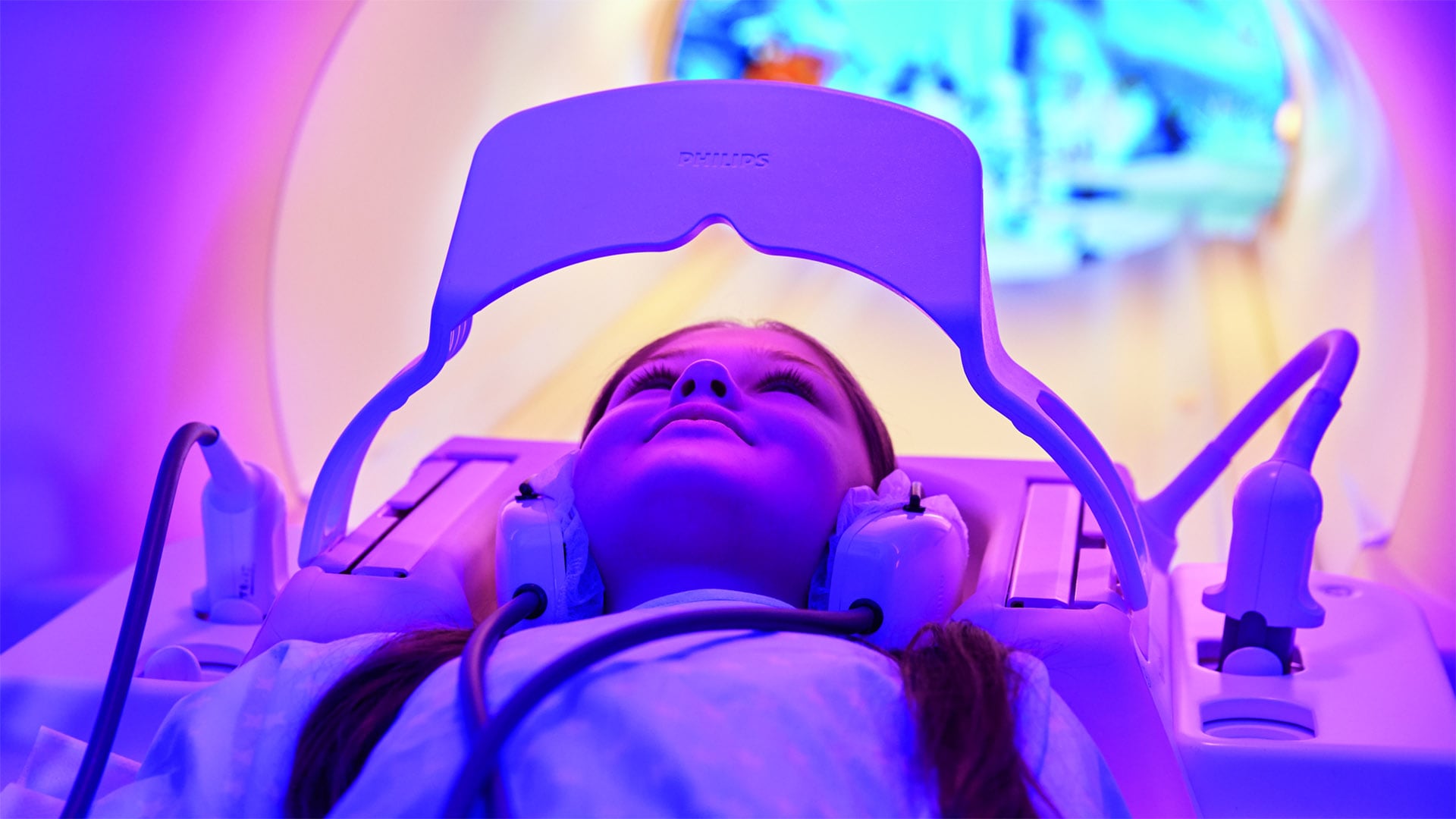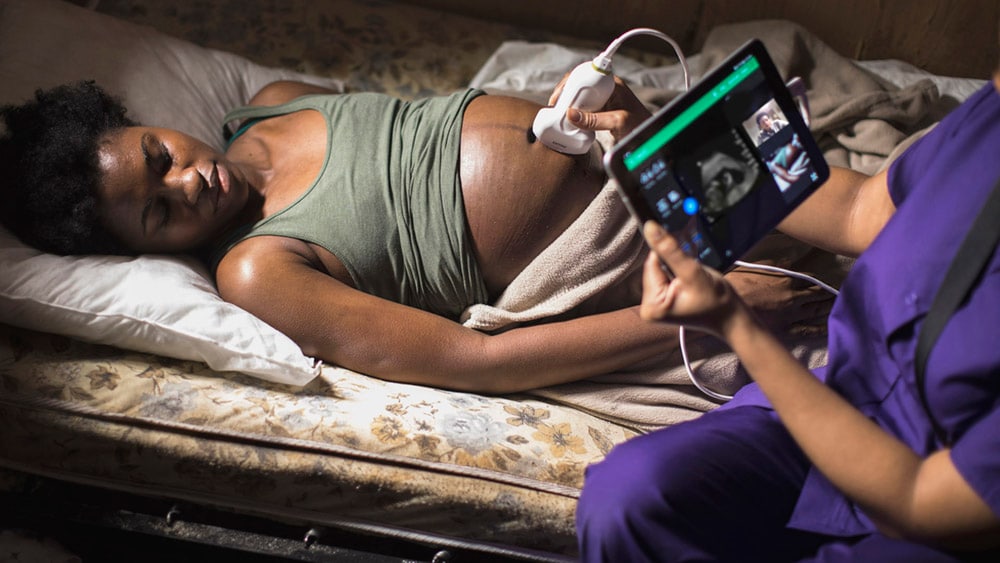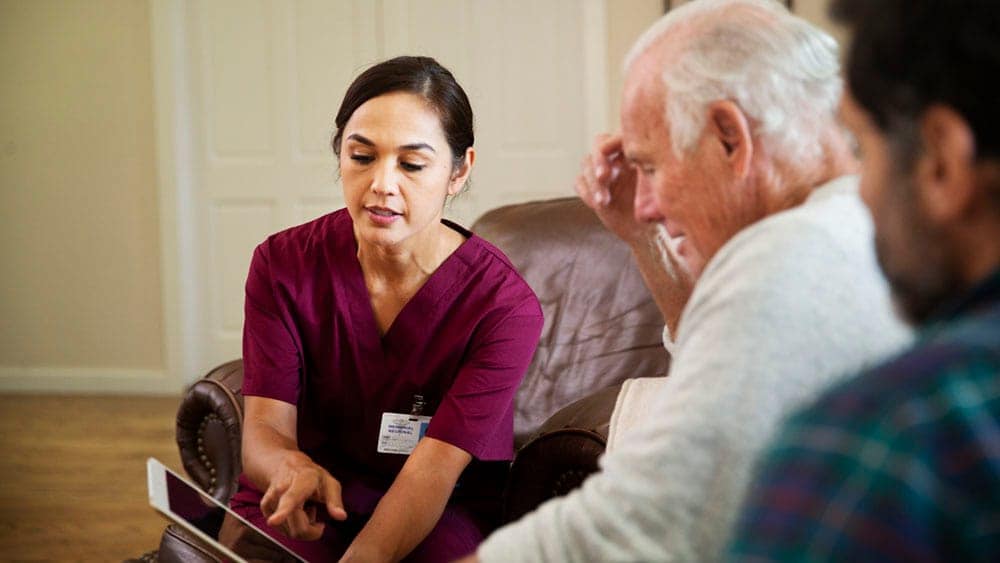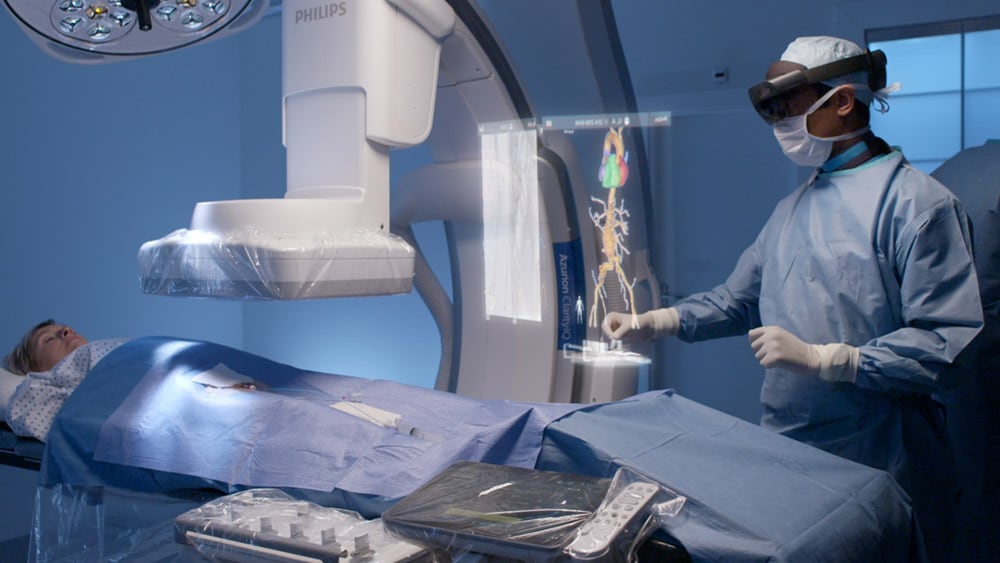Our 10 most-read articles in 2019 on the future of healthcare
Dec 04, 2019 - Reading time 6-8 minutes
As 2019 draws to an end, we are at the dawn of a new decade – and it promises to be a time of unparalleled change in healthcare. How will healthcare systems, care providers, and patients benefit from emerging technologies such as artificial intelligence, augmented reality, and the Internet of Things? This list brings together our most-read articles on the future of healthcare in 2019; a collection of forward-looking visions that give you a glimpse of where healthcare is heading.

1. The hospital of the future puts people first
What will the hospital of the future look like? According to Jeroen Tas, Chief Innovation and Strategy Officer, it will be very different from what we are used to today. In our most-read article of 2019, Tas shares his vision of a hospital that is not confined to the walls of a single building or hospital complex, but which comprises an integrated network of healthcare facilities and services that reach out into every corner of the community. All organized around the patient.
2. Stepping up to the challenge of sustainable and inclusive growth
A healthier and sustainable world for all. That’s the north star which our CEO Frans van Houten describes in this article, reflecting on the reality that over half the global population still lacks access to essential health services. Drawing inspiration from a personal letter by his late grandfather, Van Houten makes the case for inclusive and sustainable healthcare development, highlighting the importance of Universal Health Coverage and the transition from a linear to a circular economy.
3. Five ways in which healthcare innovation has changed over the past 15 years
How can healthcare providers and health technology companies partner up to address the rising demand for care and surging costs? Today’s world requires a new approach to innovation, argues Chief Technology Officer Henk van Houten as he looks back on the past 15 years. He envisions a future of value-based care, supported by open digital platforms and ‘systems of engagement’ that connect and interpret patient data from various sources to support caregivers with relevant insights at the point of care.

4. How informatics supports increased productivity, better outcomes and improved experiences in healthcare
Chief Medical Officer Jan Kimpen further elaborates on what is needed to turn value-based care into a reality. He calls for a collaborative approach, enabled by health informatics, to connect caregivers, data, and technology across patient pathways. This is still a far cry from how most healthcare systems are organized today, Kimpen points out. He lists three priorities for change while highlighting bright spots to take inspiration from.
5. Five innovations that are shaping the future of image-guided therapy
Few areas of medicine have evolved as rapidly as image-guided therapy. Open heart surgery used to be the norm for treating conditions such as coronary artery disease. A patient would spend more than a week in the hospital. Today, a patient treated for coronary artery disease is often able to walk out of the hospital the same day – thanks to minimally invasive procedures. What’s next in image-guided therapy? Bert van Meurs, Chief Business Leader Image Guided Therapy, lists five key innovation areas.
6. Five ways in which the Internet of Things is transforming healthcare
Imagine a future in which all healthcare professionals that are involved in the care for a patient have easy access to the same holistic view of that patient – whether it’s in a high-tech hospital room where the patient is about to undergo a life-saving operation, or during a video consult with a patient who calls for advice based on the latest health readings from her home therapy device. Chief Technology Officer Henk van Houten explains how the Internet of Things can help turn this vision into a reality.

7. Drowning for data while starving for wisdom – how AI can help
One of the biggest challenges clinicians face today is the sheer amount and complexity of data they acquire every day. With such a huge influx of data, often stored across disparate systems, clinicians can easily feel overwhelmed. Carla Kriwet, Chief Business Leader Connected Care, details how artificial intelligence (AI) can help translate data into actionable insights to help clinicians prioritize, increase efficiency, and improve patient outcomes along the entire continuum of care.
8. Why it is time for a paradigm shift in lung cancer treatment
Lung cancer remains the leading cause of cancer death worldwide. Tragically, the majority of patients are diagnosed at a late stage, with a minimal chance of surgical cure. Fortunately, the knowledge and the technology are now available to diagnose and treat lung cancer earlier, more accurately, and less invasively. Ronald Tabaksblat, Business Leader Image Guided Therapy Systems, reveals how.
9. Observing the future through an AR lens
User-friendly, intuitive interfaces are key to the future of healthcare, according to Atul Gupta, Chief Medical Officer Image Guided Therapy. In this article, Gupta highlights augmented reality (AR) as a case in point, showing how AR will allow clinicians in the interventional suite to keep their eyes on the patient, while superimposing live data and 3D medical imagery to guide precision therapy. It’s a whole new way of looking at image-guided therapy, from which both patients and staff stand to benefit.

10. Artificial intelligence is the great healthcare equalizer
Despite advances in medical technology, healthcare accessibility and levels of clinical expertise and performance still vary tremendously between regions and care settings, says Rob Cascella, Chief Business Leader Precision Diagnosis. Can AI contribute to a universal standard of patient care by advancing precision diagnosis across the globe?









